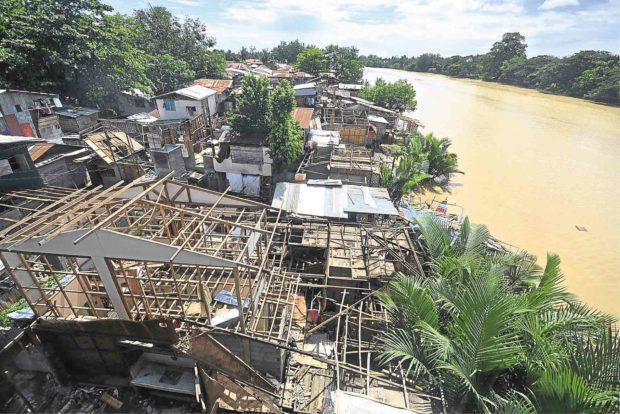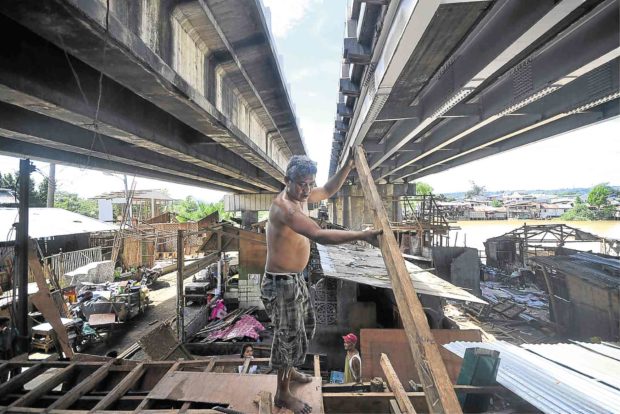Davao squatters tear down houses, leaving disaster-prone sites

Residents of Bucana, a community along the Davao River in Davao City, are leaving to ensure their safety following the flooding that hit the city recently. —ARJOY M. CENIZA
DAVAO CITY — Dozens of informal settlers here have begun tearing down their houses in areas considered to be disaster-prone as the city government issued them an ultimatum to leave and consider relocation.
Nestor Canlang, whose family lives in the community of Bucana here, said they realized that the order for them to leave was for their own good.
“It is for my family’s safety anyway. I am moving to another area while my application for a lot at the relocation site in (Barangay) Los Amigos is being processed,” said Canlang, a father of three.
Data from the City Housing Office showed that the city has 13 relocation areas covering 773,259 hectares.
The Los Amigos relocation area in Tugbok district has a total land area of 23 ha for Phase 1 alone and is the most popular among informal settlers due to its accessibility. More than 1,000 families are living there.
Relocation areas
Other relocation areas owned by the city government are in the villages of Catalunan Grande, Tibungco, Mintal, Marapangi
in Toril district; and the villages of Tigatto, Upper Malagamot, Panacan and Mahayag in Bunawan district.
While it had been a policy of the city government not to demolish structures put up by informal settlers, Mayor Sara Duterte had decided that this time, safety would be the primary concern, especially in the wake of the Dec. 22 floods that displaced more than 31,000 residents and killed one person.
Demolitions were rare in the city and in most cases, these were conducted by private landowners.
Duterte said she had to consider general welfare when she issued the order for the removal of illegal structures on roads, drainage systems and near major waterways last year.
She alo created a task force that would clear the city’s road right-of-way and drainage systems of vehicles and illegal occupants through Executive Order No. 2.
High-risk sites
The EO cited evicting illegal occupants in high-risk areas like esteros, garbage dumps, riverbanks, shorelines, waterways and other public areas, such as sidewalks and roads.
Duterte had warned then that those who would not voluntarily tear down their illegal structures would face demolition.
The EO also mandated the periodical cleaning of drainage lines and the monitoring of the implementation of drainage projects. —Arjoy Ceniza with a report from Allan Nawal















